February 9, 2024
What is Retail Media
In the ever-evolving of digital marketing space, a phenomenon has been quietly reshaping the way brands connect with consumers.
It is called retail media.
While a form of retail media has technically been around since brick-and-mortar stores have opened their doors, the definition has evolved as advertising has gone digital. We will get into this definition in a bit, but it’s important to understand that retail media is not new, but rather it’s a fix for a modern problem. It’s trending and it’s growing.
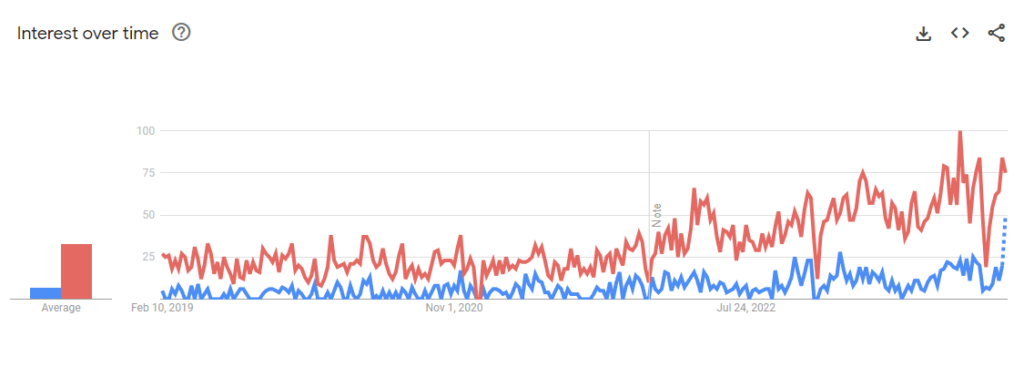 According to Google Search Trends, interest in understanding the intricacies of retail media has soared by a staggering 359% over the past five years. It’s a clear indication that this evolving sector is not just a passing trend but a pivotal force capturing the attention of marketers and consumers alike.
According to Google Search Trends, interest in understanding the intricacies of retail media has soared by a staggering 359% over the past five years. It’s a clear indication that this evolving sector is not just a passing trend but a pivotal force capturing the attention of marketers and consumers alike.
THE BASICS
At a high level, retail media is advertising that targets people near the point of purchase. Many times, this is the advertising of a brand that sells on a retail platform – think Amazon, Walmart, Target, Kroger, Instacart, etc. However, those retail platforms can also sell that advertising space to what is called “non-endemic brands.” These are brands or services or businesses that do not sell on the platform necessarily but want to harness the platform’s first-party data and placements for advertisement. This could be brands in industries such as finance, automotive, hospitality, and more.
In other words, retail media is where retailers leverage their online platforms, mobile apps, in-store displays, and other marketing channels to offer advertising services to brands.
WHAT RETAIL MEDIA ADS LOOK LIKE
There are several types of retail media ads, and many more sub-types. Let’s walk through some of the main examples.
In-store Ads
This is where retail media ads began. In physical retail stores, retailers can offer advertising opportunities through in-store displays, kiosks, signage, and promotional events. Brands can showcase their products or services directly to customers within the store environment.
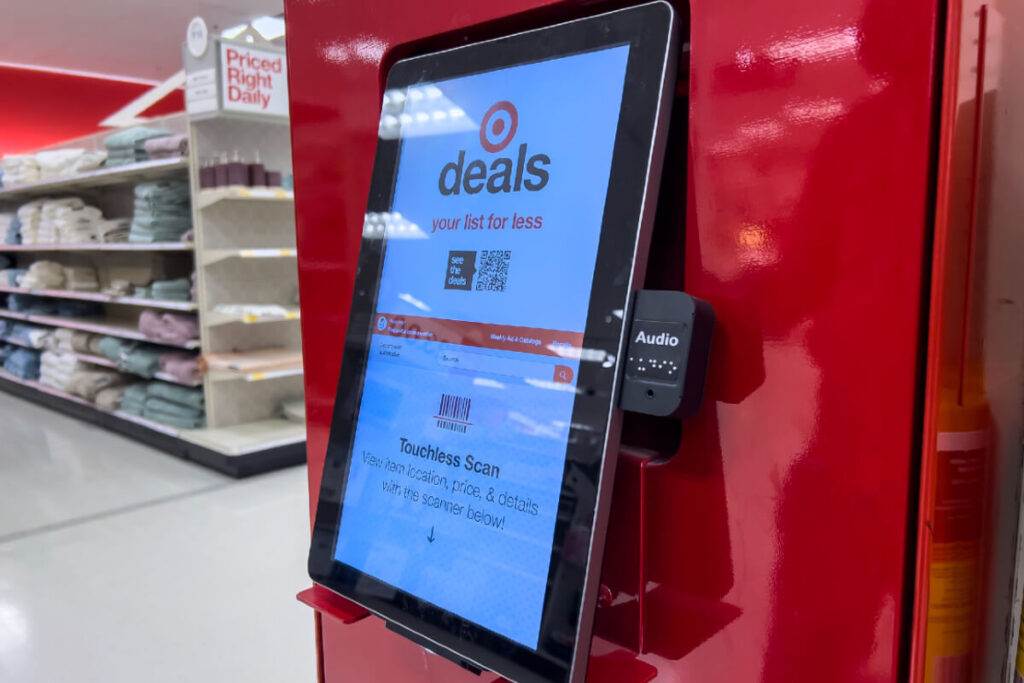
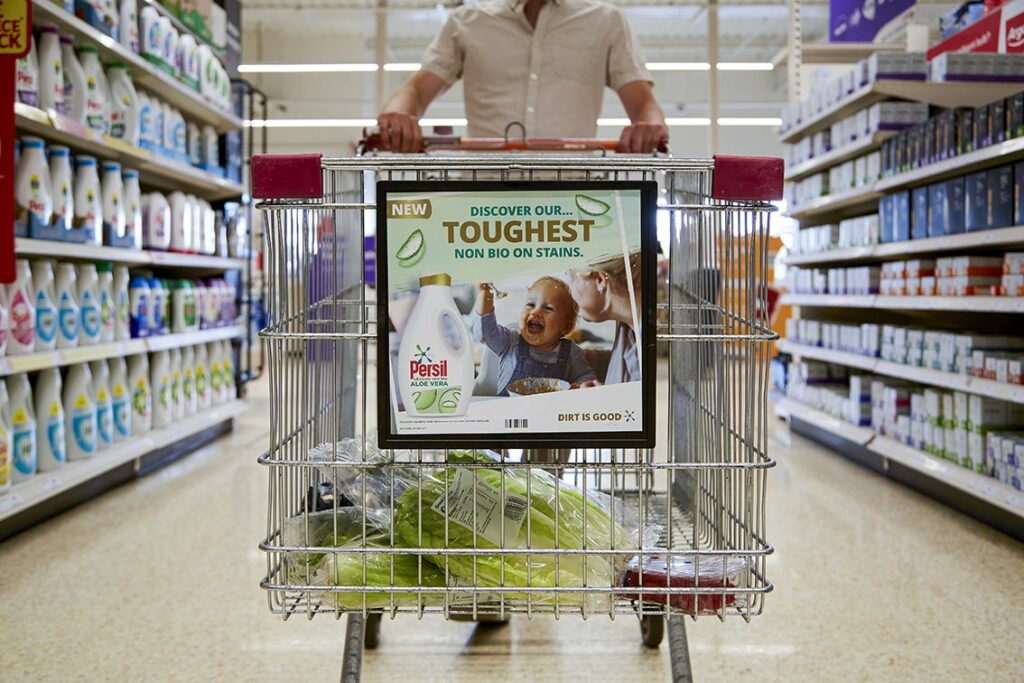
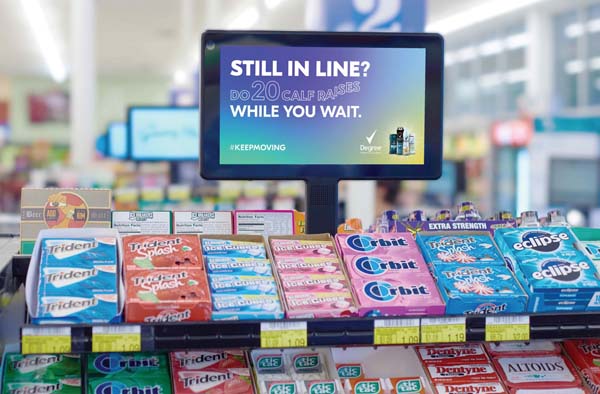
In-store retail media advertising has certainly evolved over the past decade. According to the Interactive Advertising Bureau (iab), “The retail landscape is undergoing a profound transformation driven by advanced technologies and AI, reshaping the customer experience and retail strategy.”
In their 2024 Retail Media In-Store Success report, they noted several innovations that are changing how retailers measure and calculate. Here are a few of the examples from the report:
Visual sensors in retail stores gather anonymized data on customer flow and engagement, tracking in-store ad views, visitor numbers per section, time spent, and product interactions.
Example: Grocery TV employs visual sensors at checkout with wide-angle cameras that activate advertisements when detecting a customer’s presence. These sensors trigger ads only when a customer is exposed to the digital display.
Beacons and Bluetooth in Retail allow specialized mobile apps to track customer location and movement patterns within the store.
Example: Best Buy operates a proprietary in-store beacon network with over five thousand beacons deployed nationally. These beacons trigger relevant ads based on a location within the store. They trigger messages either at the entrance or by select departments. Users receive a push message that opens into a full-screen ad experience, ensuring consumer consent through opt-ins.
On-site Ads
These ads are served within the retailer’s platform. Depending on the platform, they can include sponsored products, sponsored brands, and sponsored videos. These ads are typically delivered based on search terms entered in search bar by the shopper. These sponsored ads are native ads, designed to seamlessly blend into search results and product details pages.
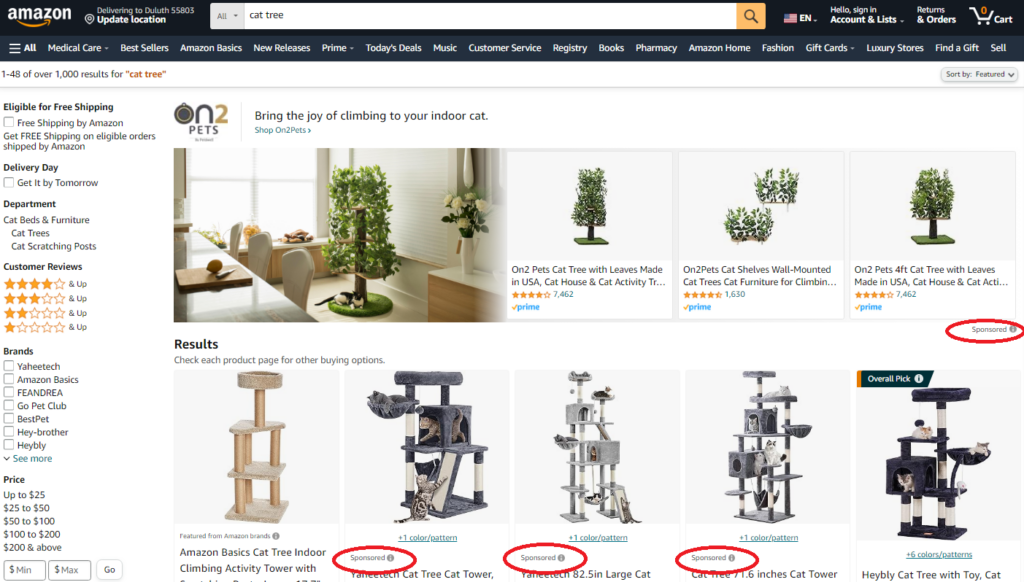
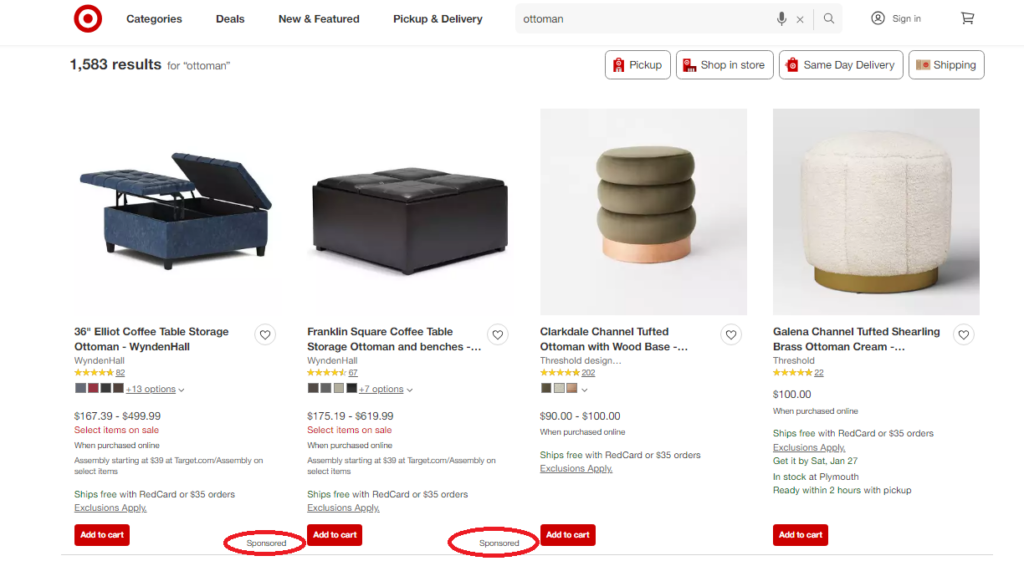
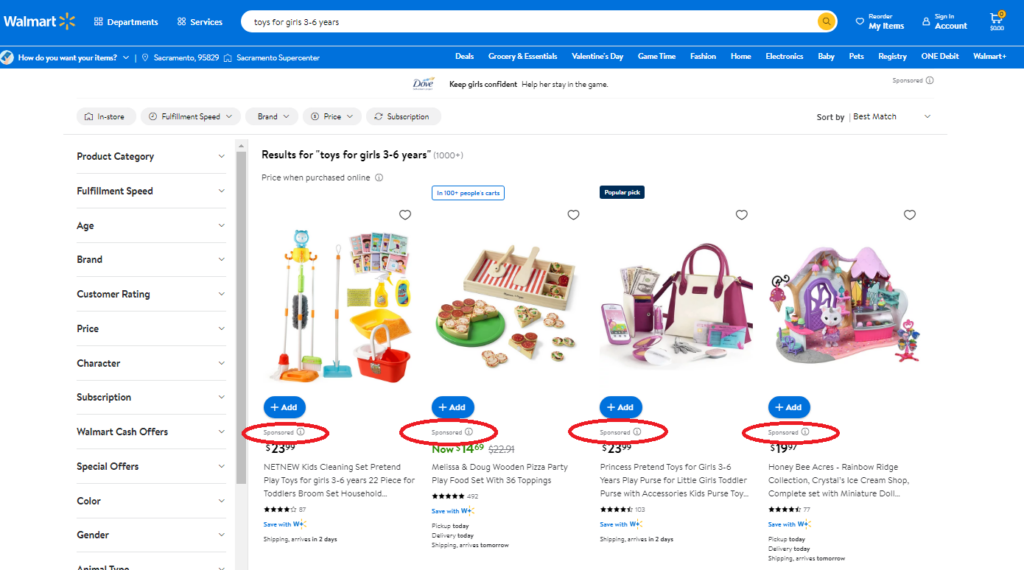
You will also see display ads on-site. These are ads that may follow the shopper around while they browse. These are often delivered based on shopping behavior and purchase history.
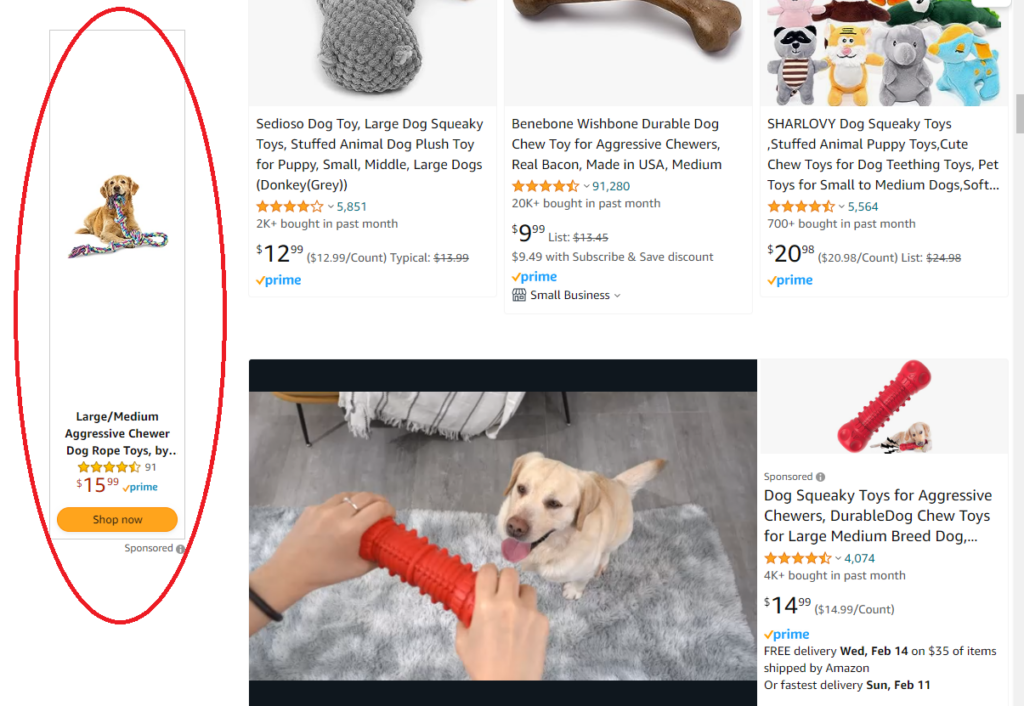
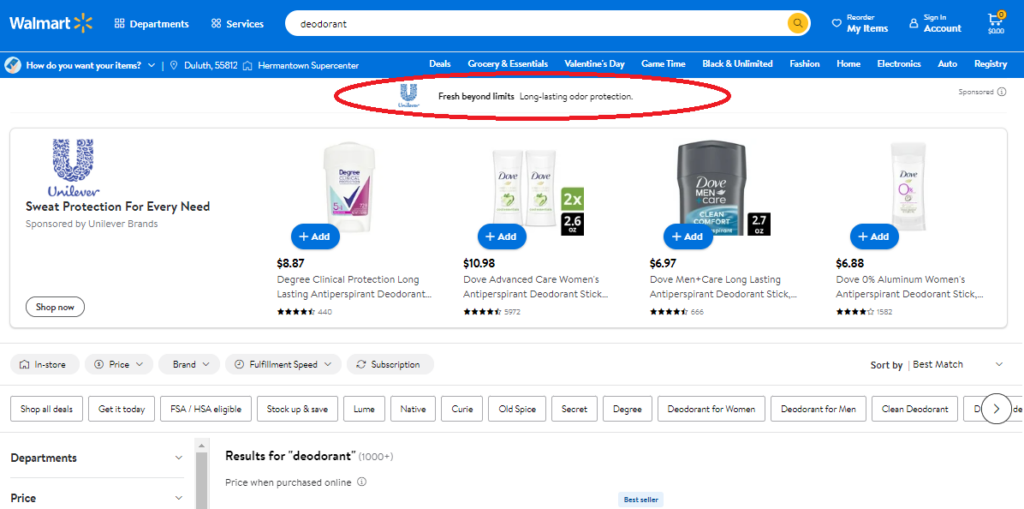
Off-site Ads
Display, video, and audio ads can be placed across the web and other platforms through third-party partnerships. For instance, Amazon can offer placements on all their O&O properties, including Prime Video, Freevee, Twitch, and many, many more. Meanwhile, Walmart has partnerships with Tiktok, Roku, and others that allows them to expand the reach of the advertisers that use their retail media platform.


WHO ARE THE MAJOR PLAYERS
While retail media refers to the ads, a retail media network refers to the advertising platform that allows retailers to sell ad space on their digital channels to third-party brands.
According to Insider Intelligence, the five biggest retail media networks in 2023 by ad revenue are Amazon Advertising, Walmart Connect, Instacart, eBay, and Etsy.
Amazon Advertising: Amazon, one of the pioneers in retail media and the biggest network, accounts for 75% of retail media ad revenue share, according to Insider Intelligence. The platform offers a range of advertising solutions, including sponsored products, sponsored brands, and display ads. Advertisers can target shoppers based on their search and purchase behavior, making it a powerful platform for e-commerce brands.
Walmart Connect: Walmart has entered the retail media space with Walmart Connect, providing advertisers with the ability to reach shoppers both online and in-store. With its vast customer base, Walmart Connect offers advertisers a significant reach.
Instacart: Instacart is the leading grocery technology company in North America. Their advertising solutions reach millions of high-intent consumers across the U.S. and Canada – available to over 95% of households.
eBay: eBay has been paving its own path as a retail media network outside of consumer-packaged goods (CPG). Seeing substantial growth in 2023, the network has mostly boosted revenues through tech improvements.
Etsy: Etsy advertises listings throughout the web, including in search engine results, social media sites and apps, Etsy Publishing Partner sites, and Google Display Network sites.
Other retail media networks include Kroger, Target Roundel, Home Depot, Wayfair, Costco, Sam’s, Best Buy and Chewy.
There are also connected retail media networks that are integrated with multiple retail companies. This allows advertisers to scale across multiple retail media platforms through one account. Criteo and CitrusAd are two powerhouses in this sector.
WHY RETAIL MEDIA
Retail media provides brands with a unique opportunity to engage with consumers directly within the shopping environment. This direct access to shoppers allows advertisers to influence purchasing decisions at the moment when consumers are actively considering products, creating a more effective and targeted advertising experience.
In addition, retailers possess valuable first-party data about their customers’ preferences, behaviors, and purchase history. This data-driven approach enables advertisers to target specific audience segments with personalized and relevant content, leading to higher conversion rates and improved return on investment (ROI).
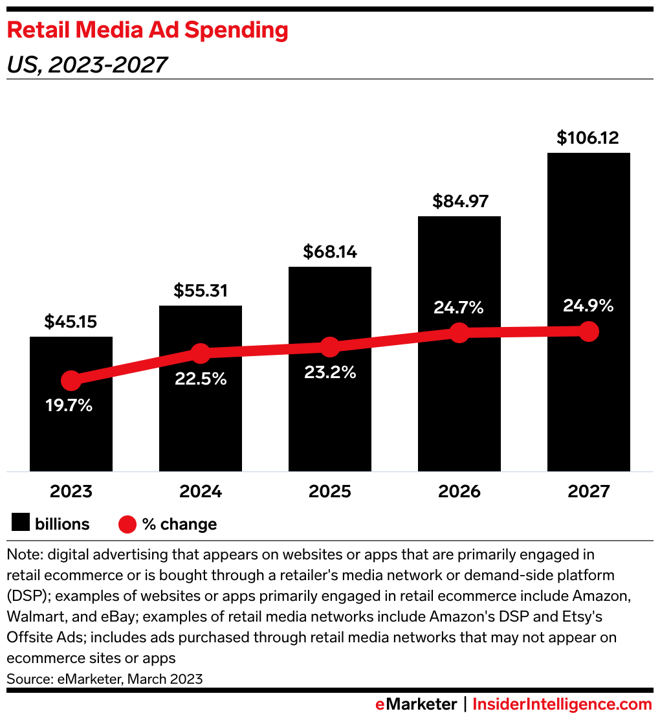
This direct access to shoppers and first-party data means retail media platforms cover the entire customer journey, from awareness to purchase. Brands can create holistic advertising campaigns that build brand awareness, drive consideration, and ultimately lead to conversion, all within the same retail ecosystem.
Finally, the rise of online shopping and the increasing use of mobile devices have reshaped consumer behavior and retail media continues an upward trend. Retail media allows advertisers to adapt to these changes and connect with consumers in the digital spaces where they spend a significant amount of time.
SOME CHALLENGES
While retail media has witnessed significant growth and adoption, it is not without its challenges. Several factors pose obstacles to the seamless functioning and continued success of retail media platforms:
Attribution and Measurement Complexity: Determining the exact impact of retail media campaigns on sales and ROI can be challenging. Attribution models must consider various touchpoints along the customer journey, both online and offline. Establishing clear and accurate metrics for success remains a significant hurdle.

Integration and Collaboration Issues: For successful retail media campaigns, seamless integration between retailers and advertisers is crucial. However, achieving this integration, especially when dealing with different technology stacks and platforms, can be complex. Collaboration challenges may hinder the optimal execution of advertising strategies.
READY TO VENTURE INTO RETAIL MEDIA?
Most in the retail media industry are well-aware of these challenges posing hurdles to increased adoption and ad revenue. However, even without solutions to these challenges, retail media has become an integral part of the advertising landscape, offering brands a direct and targeted way to connect with consumers throughout their shopping journey. As digital transformation continues to reshape the retail industry, the importance of retail media is likely to grow. Brands that embrace and leverage its utility will gain the advantage.